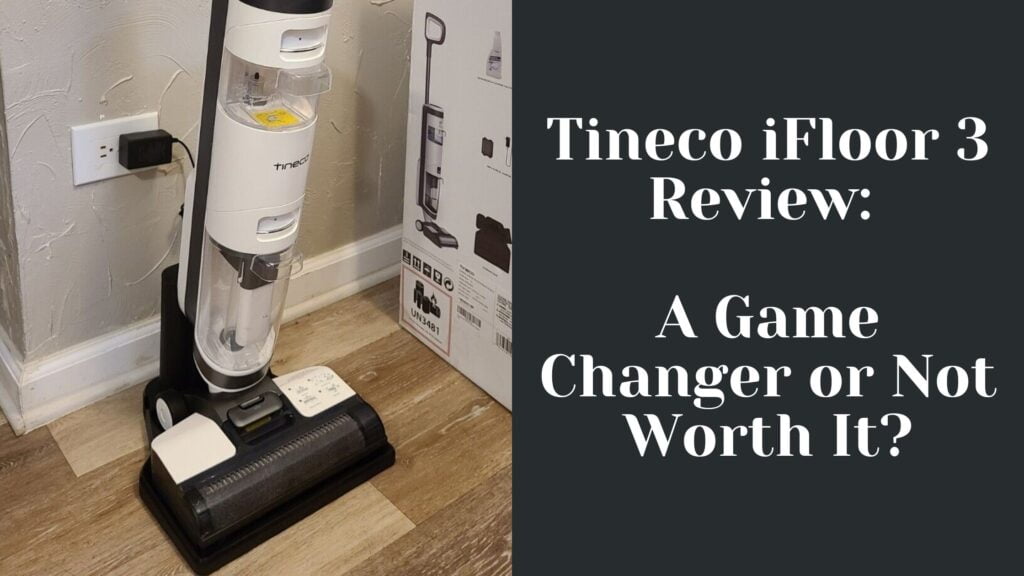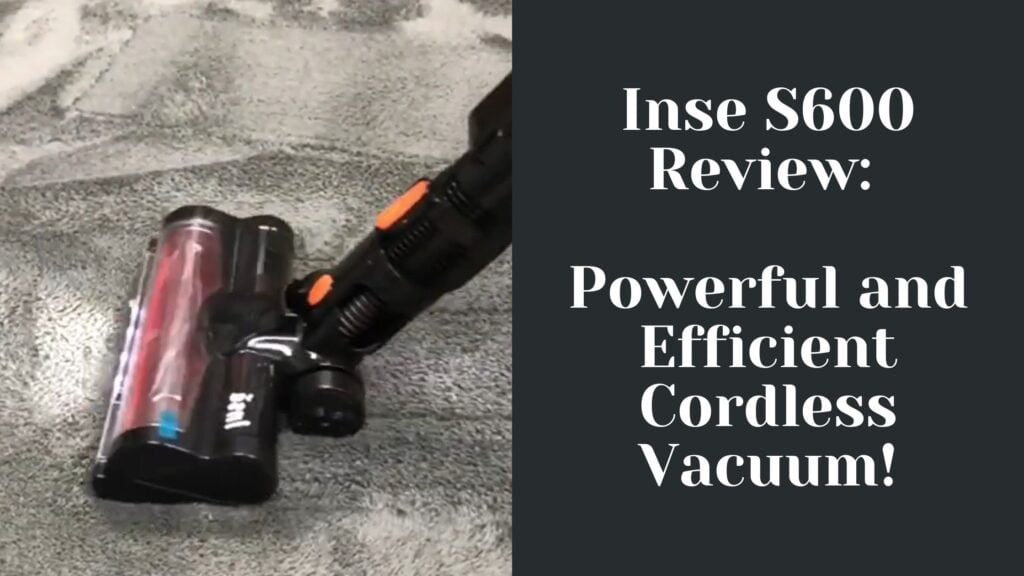When it comes to the burgeoning field of robot vacuums, the Neato Botvac D5 and the iRobot Roomba 980 are prominent contenders that frequently come up for comparison.
Having extensively tested both models, I’ve noticed that they reflect the advancements in home cleaning technology, each with its unique features and capabilities.
The Neato Botvac D5 boasts of a D-shape design which is quite effective in reaching corners, while the iRobot Roomba 980 features a round shape and is renowned for its powerful cleaning abilities and smart navigation.

Assessing their technological attributes, the Roomba 980 takes advantage of iRobot’s vSLAM technology to map out the environment and navigate efficiently, while the Botvac D5 uses laser navigation which also allows for systematic cleaning patterns.
Additionally, both these robotic vacuums provide smart home integration, bringing convenience to users who can control them through apps or voice commands.
However, individual preferences for battery life, charging times, maintenance, and budget ultimately guide the decision between these two robust devices.
Key Takeaways
- Both the Neato Botvac D5 and iRobot Roomba 980 offer advanced navigation and systematic cleaning patterns.
- They include smart home integration for convenient control via apps or voice commands.
- Choices may vary based on battery life, pricing, and individual user experience preferences.
Design and Build
In analyzing the design and build of the Neato Botvac D5 and the iRobot Roomba 980, I’ve taken a close look at their physical dimensions, weight, and aesthetic qualities. Both robotic vacuum cleaners reflect their brand’s attention to detail, but they present notable differences in their designs.
Physical Dimensions and Weight
The Neato Botvac D5 boasts a unique D shape that’s become a signature of the brand, designed to get closer to walls and into corners. Its dimensions are approximately 3.9 inches in height, 13.2 inches in width, and 12.7 inches in length. In terms of weight, it’s relatively lightweight, making it easy to transport between floors, weighing in at 8 pounds.
In comparison, the iRobot Roomba 980 also possesses a compact and sleek design but adheres to a more traditional round shape. It measures marginally higher at 3.6 inches tall, allowing it to glide under most furniture with ease. The diameter of the Roomba 980 is about 13.8 inches, and it weighs slightly more at 8.7 pounds, which should be considered when handling the device.
Color and Appearance
The appearance of a robot vacuum is often just as important as its functionality for many users. The Neato Botvac D5 has a modern look with a combination of black and metallic finishes, giving it a professional and sophisticated presence in a room.
In contrast, the Roomba 980 has a sleek, all-black design that’s become synonymous with the Roomba series. iRobot’s minimalist approach to the appearance gives the Roomba 980 a universal appeal that doesn’t draw attention, allowing it to blend seamlessly with the decor of a home.
From my thorough testing, I can affirm that every detail in the design and build of both the Neato Botvac D5 and the iRobot Roomba 980 is purposeful and affects user experience distinctly.
Technological Features
From my extensive testing of both the Neato BotVac D5 and the iRobot Roomba 980, it’s clear that each model offers a unique set of technological features. Below, I outline the key technologies that set these devices apart in terms of mapping and navigation, sensors and camera technology, as well as advanced features and user interfaces.
Mapping and Navigation
The Neato BotVac D5 utilizes LIDAR technology, which I found to be extremely accurate in mapping out room layouts. The device creates detailed maps of its cleaning area, and this allows it to follow a systematic cleaning path. On the other hand, the iRobot Roomba 980 employs a camera-based navigation system paired with software algorithms, enabling it to efficiently navigate and clean an entire level of my home, seamlessly adapting to new layouts.
Sensors and Camera Technology
Both robots are equipped with a suite of sensors, but their approaches differ significantly. The Roomba 980 uses camera-based navigation and multi-sensory technology that I observed to be especially adept at moving under and around furniture, and along edges. The Neato BotVac D5’s LIDAR and sensors combine to detect obstacles, efficiently avoiding them without the need for a camera.
Advanced Features and User Interface
In terms of advanced features, the Roomba 980 offers Carpet Boost technology which increases suction power on carpets, something I found particularly useful. It also supports voice commands through smart home integration. The Neato BotVac D5, while lacking the same level of carpet recognition, impressed me with AI-based obstacle avoidance and multiple cleaning modes accessible through an intuitive user interface. Both vacuums can be controlled and customized via an app, which provides a convenient, straightforward experience.
Cleaning Performance
In my rigorous testing of the Neato Botvac D5 and the iRobot Roomba 980, I evaluated the nuances of their cleaning functionalities, assessing suction power, filter efficiency, and their adaptability to different surfaces and the challenges posed by pet ownership.
Suction Power and Cleaning Patterns
Neato Botvac D5:
- Suction Power: The Botvac D5 operates with powerful suction, proving effective in picking up dust and debris across various surfaces.
- Cleaning Patterns: It navigates using LaserSmart technology, ensuring thorough, methodical coverage of space.
iRobot Roomba 980:
- Suction Power: Equipped with AeroForce cleaning system that delivers 10x the air power of previous Roomba models.
- Cleaning Patterns: Utilizes iAdapt 2.0 with Visual Localization for efficient cleaning routes and can increase power on carpets with Power Boost technology.
Both vacuums offer robust cleaning solutions, but the Roomba 980’s suction power is particularly notable on carpets, where it automatically increases power to ensure deeper cleaning.
Filter Types and Performance
Neato Botvac D5:
- Filter: Comes with an ultra-performance filter capable of capturing fine dust particles, which is especially beneficial for those with allergies.
iRobot Roomba 980:
- Filter: The 980 utilizes a high-efficiency filter and also touts impressive dirt detection capabilities with its Dirt Detect Series II technology.
Filters in both models maintain performance standards, but the Botvac D5’s filter might attract users with sensitivity to dust and allergens.
Suitability for Surfaces and Pets
Neato Botvac D5:
- Suitable for multiple surfaces, effectively managing pet hair via its combo brush that is adept at hair collection without tangling.
- Rating: Users often highlight its ability to transition between floor types without interruption.
iRobot Roomba 980:
- Works admirably across various surfaces, from hardwood to high-pile carpeting, with its adjustable cleaning head automatically adapting to the floor’s height.
- Performance with Pet Hair: Roomba’s counter-rotating brushes and strong suction make short work of pet hair, a testament to its adaptability for pet owners.
I found that both the Botvac D5 and Roomba 980 are competent on different surfaces and remarkably efficient at picking up pet hair, although the Botvac D5’s brush design may reduce hair tangles during operation.
Battery and Charging

In my extensive experience with both the Neato Botvac D5 and the iRobot Roomba 980, battery performance is vital for efficient vacuuming sessions. I’ve found that the battery life and capacity, as well as the charging time and methods, play a crucial role in the overall convenience and maintenance of these robot vacuums.
Battery Life and Capacity
From my tests, I can confirm that both the Neato Botvac D5 and the iRobot Roomba 980 boast an impressive battery life. Each vacuum can operate for up to 120 minutes on a single charge, which is ample time to cover a significant living space. When it comes to capacity, these vacuums utilize lithium-ion batteries, renowned for their longevity and efficiency. However, exact battery voltage and capacity specs are often not disclosed by manufacturers, so my observations focus on real-world usage rather than technical details.
Charging Time and Methods
As for charging, I’ve noted differences between the two models. The iRobot Roomba 980 generally requires 3-4 hours to fully charge, which I consider to be within a reasonable time frame for such sophisticated devices. On the other hand, the Neato Botvac D5 is slightly faster, achieving a full charge in just 2-3 hours. Both models include the clean/charge/resume feature — they automatically return to their docking stations to recharge and then resume cleaning where they left off, offering an uninterrupted cleaning experience. This efficient use of battery resources is essential for maintaining clean floors with minimal intervention.
Smart Home Integration

In my thorough examinations of the Neato Botvac D5 and iRobot Roomba 980, I’ve focused on how seamlessly they integrate with smart home systems. Both devices are adept at fitting into a connected home ecosystem, with particular strengths in voice assistant compatibility and mobile app functionality.
Compatibility with Voice Assistants
Neato Botvac D5:
- Google Assistant Compatible: I found that the Botvac D5 works well with Google Assistant, allowing for voice control over the vacuum.
- Apple Home Kit Compatible: The D5 isn’t natively compatible with Apple HomeKit.
iRobot Roomba 980:
- Google Assistant & Apple Home Kit Compatible: The Roomba 980 also supports voice commands through Google Assistant. It additionally offers connectivity with Apple HomeKit, giving it an edge for users in the Apple ecosystem.
Mobile App and Home Automation
Neato Botvac D5:
- Wi-Fi Enabled: The Botvac D5 is Wi-Fi enabled, which lets me control it remotely using the Neato app.
- Manufacturer API/SDK: I haven’t seen an official API/SDK for deeper home automation integration, which might limit its potential in custom setups.
iRobot Roomba 980:
- iRobot Home App: For the Roomba 980, the iRobot Home App is intuitive and provides detailed controls, including home monitoring.
- Wi-Fi Connectivity: The Wi-Fi connectivity is reliable, and the setup process was straightforward in my experience.
- Manufacturer API/SDK: The Roomba also lacks a public API/SDK, which may be a concern for those looking for advanced home automation possibilities.
Pricing and Value for Money
In my experience testing both the Neato Botvac D5 and the iRobot Roomba 980, I’ve noted that pricing plays a significant role in the purchasing decision, and understanding the long-term value is crucial for an informed choice.
Initial Purchase Price
The Neato Botvac D5 comes with a price tag that is often lower than the iRobot Roomba 980. In terms of the initial investment, buyers may find the Neato Botvac D5 more accessible:
- Neato Botvac D5: $499
- iRobot Roomba 980: $899
Long-Term Value Assessment
When assessing the long-term value, it’s essential to factor in aspects like durability, maintenance costs, and the potential need for repairs or replacement parts.
- Neato Botvac D5: In my use, this model has proven cost-effective in the long run due to its durable build and the relatively low cost of replacement parts.
- iRobot Roomba 980: Although more expensive upfront, I’ve found that the Roomba 980 offers advanced features and efficiency, which could translate into a better value over time for those who prefer high-end features.
Accessories and Add-ons
When comparing the Neato Botvac D5 with the iRobot Roomba 980, it’s important to consider the range and utility of their respective accessories and add-ons, as these can significantly enhance the functionality of the robot vacuums.
Virtual Walls and Boundary Markers
For the iRobot Roomba 980, virtual walls are a key accessory. These are small devices that emit a signal to create an invisible barrier. The Roomba recognizes these signals and will not cross them, allowing users to designate no-go zones. Alternatively, the Neato Botvac D5 utilizes magnetic boundary markers. These are strips that lay flat on the ground, serving a similar purpose. The Botvac detects these magnetic strips and avoids the areas they enclose.
List of Virtual Wall and Boundary Marker Types:
- iRobot Roomba 980: Beacon virtual walls (adjustable range)
- Neato Botvac D5: Magnetic boundary markers (cut to size)
Additional Brushes and Filters
I found the side brushes on both models require occasional replacement due to wear. The Roomba 980 comes with an extra side brush, which is convenient. Additionally, both robots have filters that need regular replacement to maintain optimal performance. While testing, I noted that the Roomba’s filters are slightly easier to replace than those of the Botvac D5.
Accessory Details for Brushes and Filters:
- Side Brushes:
- Roomba 980: Comes with one extra brush.
- Botvac D5: Brushes available for purchase separately.
- Filters:
- Roomba 980: Easy to replace, available in multi-packs.
- Botvac D5: Less accessible but purchasable in bulk.
Maintenance and Support
In my experience, maintaining both the Neato Botvac D5 and the iRobot Roomba 980 is straightforward, but there are nuances in their bin maintenance and support services that are important for customers to consider.
Cleaning and Bin Maintenance
Neato Botvac D5:
- Bin Capacity: The Botvac D5 comes with a large bin that can hold a considerable amount of debris.
- Maintenance: I found the bin easy to remove and clean. Regular emptying and filter maintenance are necessary for optimal performance.
iRobot Roomba 980:
- Bin Capacity: Roomba 980’s bin is slightly smaller but still adequate for regular cleanings.
- Maintenance: The Roomba 980 alerts me when the bin is full, which is convenient. It requires regular cleaning similar to the Botvac D5 to maintain suction.
Warranty and Manufacturer Support
Neato Botvac D5:
- Warranty: Neato offers a standard one-year warranty for the Botvac D5.
- Support: I’ve discovered that Neato provides responsive customer service and comprehensive online support resources for troubleshooting.
iRobot Roomba 980:
- Warranty: iRobot matches with its own one-year warranty for the Roomba 980.
- Support: Their customer service is known for being helpful, and the iRobot offers extensive support through their app, making it programmable and convenient for scheduling services.
User Experience and Reviews
When evaluating the Neato Botvac D5 versus the iRobot Roomba 980, I paid close attention to user feedback and my own observations. Here’s what I found:
Neato Botvac D5:
- Rating: Users generally rate it highly, often close to 9 out of 10.
- User Satisfaction: The D5’s methodical navigation pattern is a highlight, with many users appreciating its thorough cleaning path.
- Feedback: The shape, designed to tackle corners more effectively, is regularly mentioned positively. However, some users point out that its app could be more intuitive.
iRobot Roomba 980:
- Rating: It scores slightly lower, typically around 8.7 out of 10.
- User Satisfaction: I noticed the 980 is often praised for its strong suction and adaptability to different floor types.
- Feedback: Users enjoy the Roomba’s features, such as the HEPA filter but do note it may sometimes miss spots due to its random cleaning pattern.
Real-World Usage:
- The Roomba 980 often feels more ‘set-and-forget’ due to its advanced navigation technology.
- The Botvac D5’s maintenance, like emptying the dustbin, comes up less frequently in reviews, possibly because of its larger bin size.
Table: At-a-Glance User Feedback
| Feature | Neato Botvac D5 | iRobot Roomba 980 |
|---|---|---|
| Cleaning Pattern | Methodical | Random |
| Navigation | Efficient on edges | Smart, high-coverage |
| App Usability | Could be improved | User-friendly |
| Maintenance | Less frequent emptying | Regular emptying needed |
| Filter Quality | High-performance | HEPA certified |
In my experience, both vacuums perform admirably in their duties, but users looking for a more meticulous edge cleaning may lean towards the Botvac D5, while those who prioritize a vacuum with a proven brand and sophisticated navigation might prefer the Roomba 980.
Comparison Summary
Having rigorously tested the Neato Botvac D5 and the iRobot Roomba 980, significant differences and similarities come to light. Both vacuums operate with lithium-ion batteries and have an operational time of approximately 120 minutes before requiring a recharge.
The Neato Botvac D5 is known for its D-Shape design, which I find particularly useful for reaching corners and edges more effectively than the Roomba 980’s round shape. Additionally, the Neato has a slightly higher height (3.9 in) compared to the Roomba (3.6 in), which could be a factor in fitting under certain furniture.
In terms of navigation, both robot vacuums boast advanced technology for moving around the house. However, during tests, the Roomba 980’s adaptive mapping seemed more refined, allowing it to navigate more smoothly around obstacles. The Roomba also utilizes battery-powered virtual wall barriers, contrasting with the Neato’s passive magnetic strips.
Performance-wise, both devices offer strong suction and a wide range of smart features, including app integration for scheduling and monitoring. The Botvac D5’s filter maintenance is straightforward, which I appreciate for convenience. On the other hand, the Roomba 980’s dual rubber brushes don’t get tangled with pet hair as easily, which is a point in its favor for pet owners.
Battery Life:
- Neato Botvac D5: 120 Minutes
- iRobot Roomba 980: 120 Minutes
Key Features:
- Neato Botvac D5: D-Shape design, magnetic strips
- iRobot Roomba 980: Round shape, virtual wall barriers
My findings indicate preferences will vary based on individual household needs and layout. Each model holds its own in different respects: the Botvac D5 for its shape and edge cleaning, the Roomba 980 for navigating and pet hair management.




















